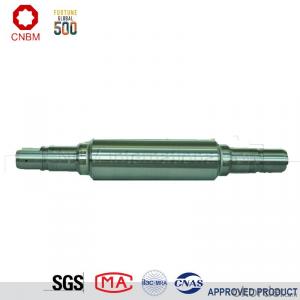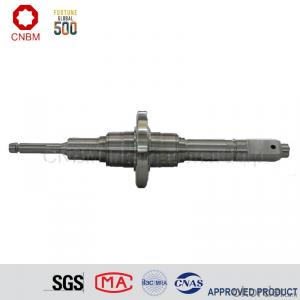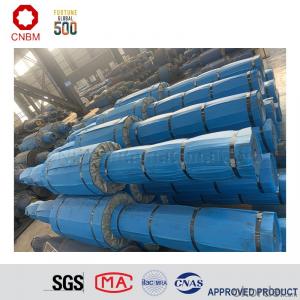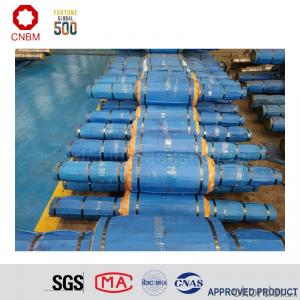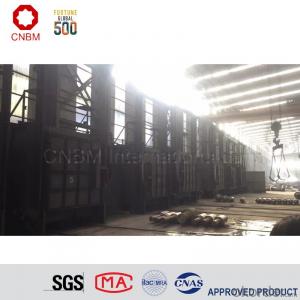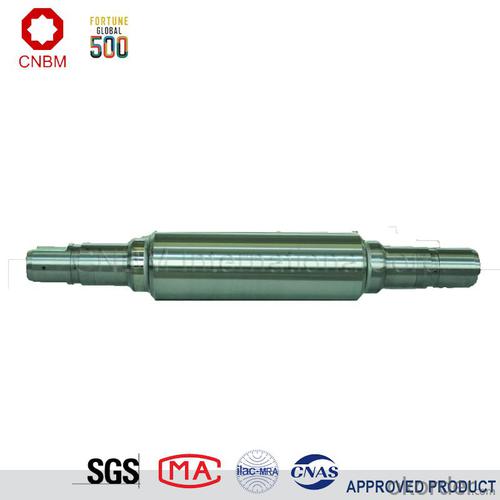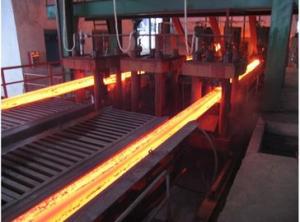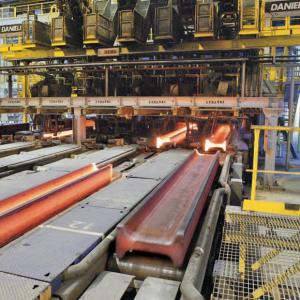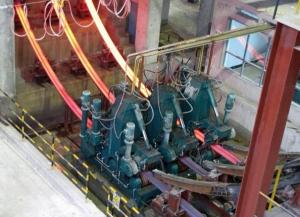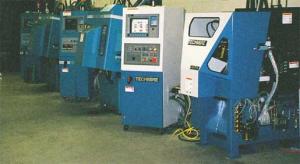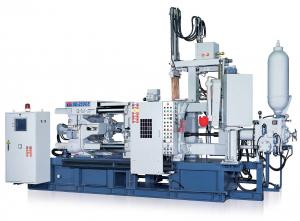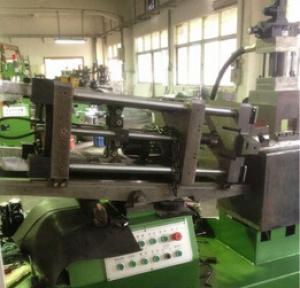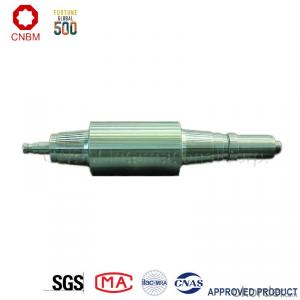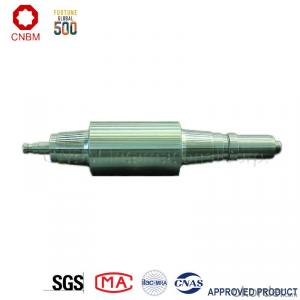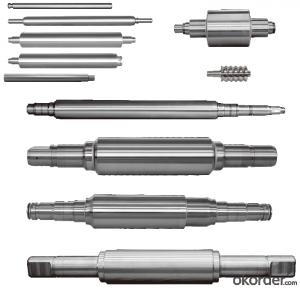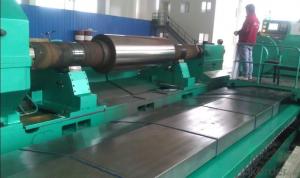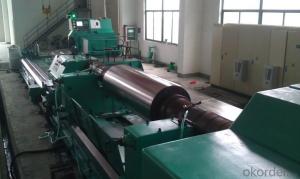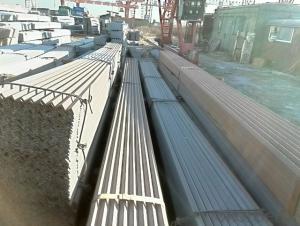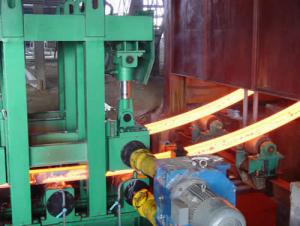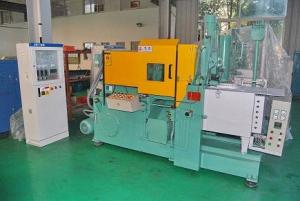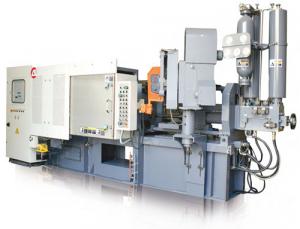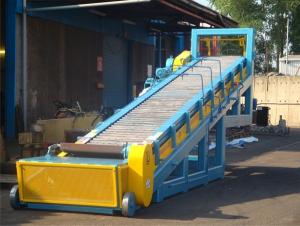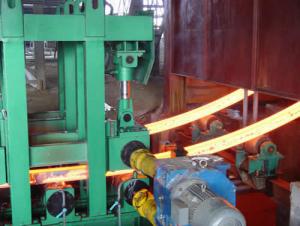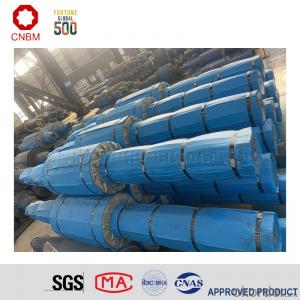Mill Rolls High Speed Steel Roller With Good Quality
- Loading Port:
- Tianjin
- Payment Terms:
- TT OR LC
- Min Order Qty:
- 2 m.t.
- Supply Capability:
- 41000 m.t./month
OKorder Service Pledge
OKorder Financial Service
You Might Also Like
Specification
Company Profile
CNBM International Corporation (CNBM International) is the most important trading platform of CNBM Group Corporation, a state-owned company under the direct supervision of State-owned Assets Supervision and Administration Commission of the State Council.
CNBM Group is integrated with four business segments: Manufacture, R&D,Sets of equipment and Logistics trading.Mill rolls are our main products.
CNBM International is highly recognized by its business partners and clients all over the world and has established good business relationship with the customers in over 120 countries and regions all over the world.
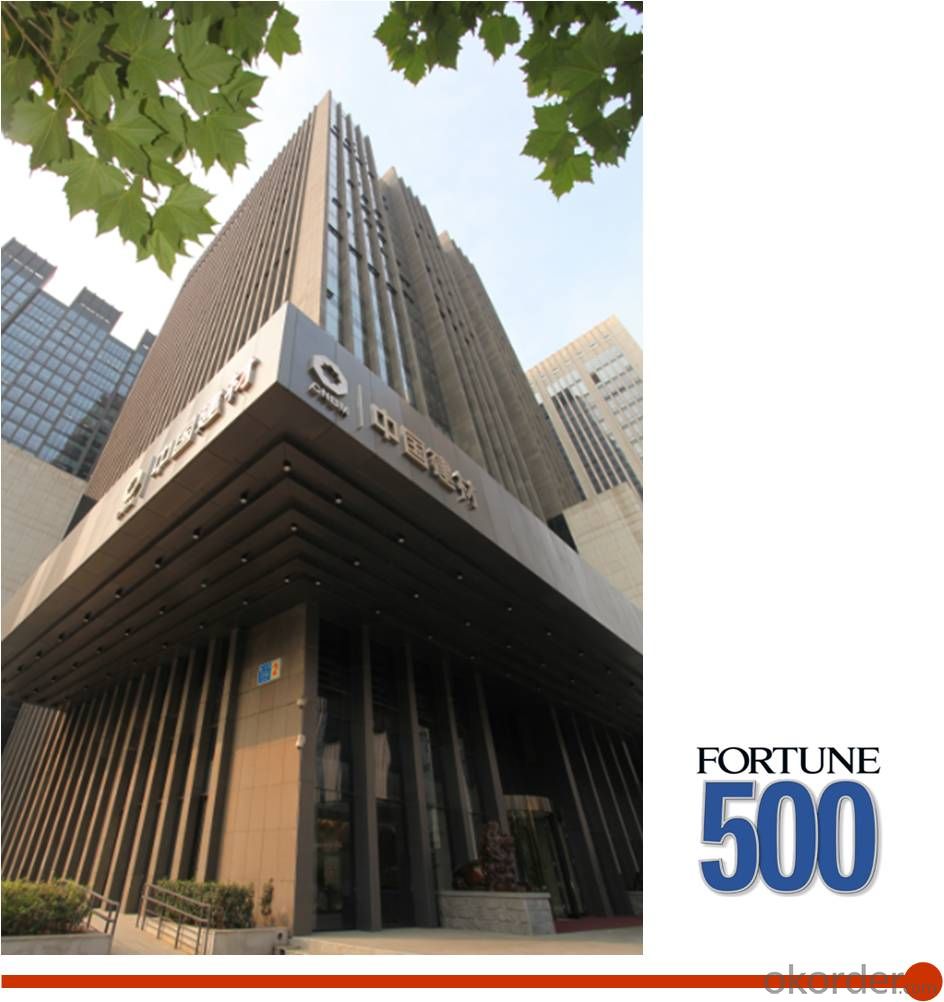
The product introduction of mill roll
Equipped with advanced technological facilities on melting, casting, forging, heat treating and mechanical machining, our factory has formed 9 professional complete roll manufacturing lines of cast steel, cast iron and forged steel rolls such as strip mill rolls, heavy section mill rolls, wire & bar rolls, special shaped rolls and small-sized cold rolls and specialized production lines of bloom and slab CCM, coke oven equipments and wind power products. Annual production capacity of mill rolls is 500,000 tons, metallurgical equipment is 80,000 tons.

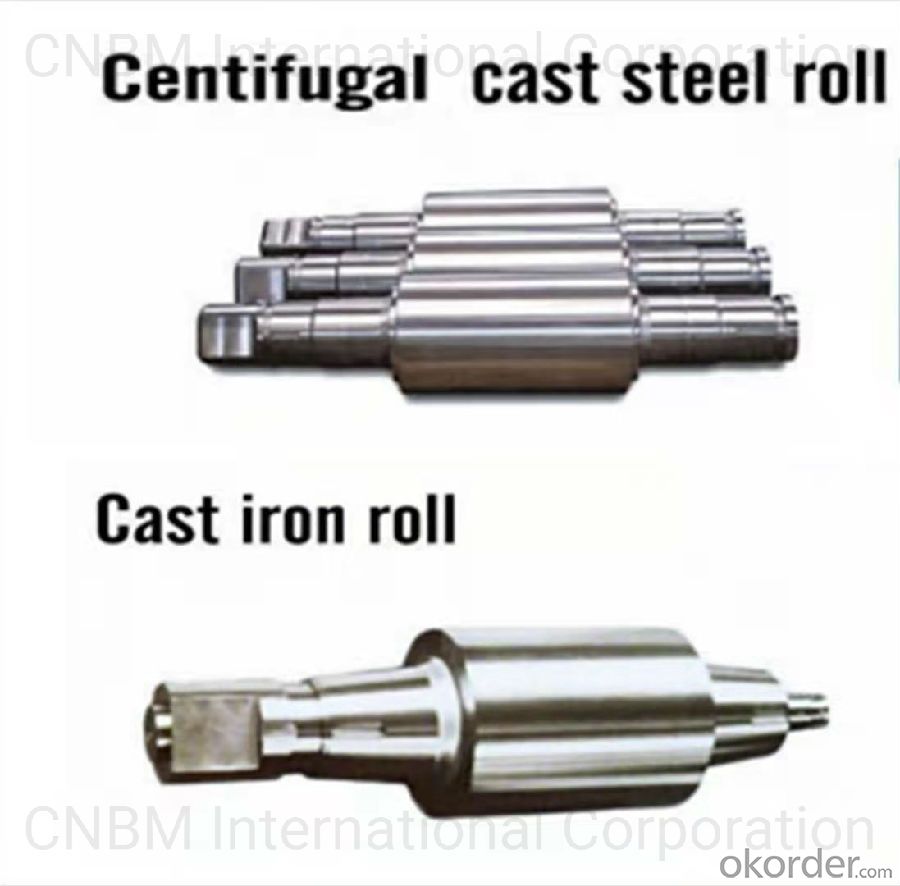
Workshop
Workshop is the core of our company and undertakes all of scientific research work. The company specially produces and supplies all kinds of roll used for hot strip mill, cold strip mill, plate & heavy plate mill, large-sized section mill, universal mill etc.
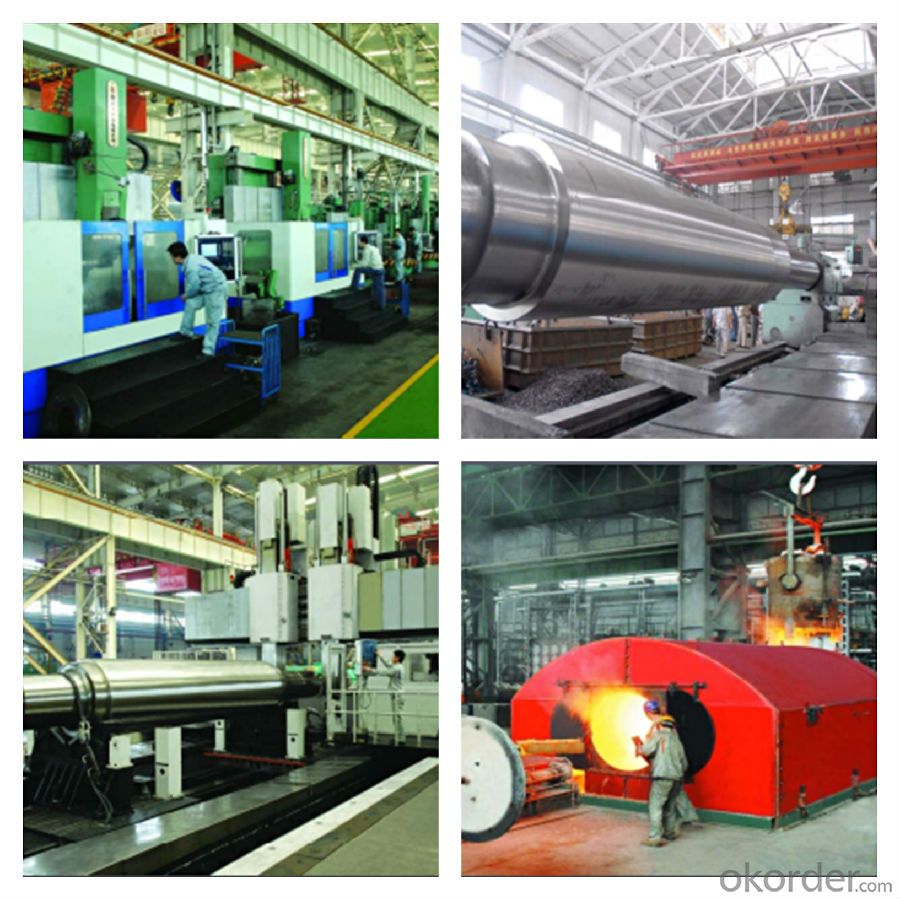
Products & Specification
| Mill | Application | Material | Product Specification | ||
| Hot Strip Mill | Large-sized vertical roll | Special alloy cast roll, Adamite | All Sizes | ||
| Small-sized vertical roll | Adamite, HiCr iron | ||||
| Roughing work roll | Special alloy cast steel, Adamite, HiCr steel, Semi-HSS, HiCr iron | ||||
| Finish rolling | Early stand work roll | HiCr iron, HSS | |||
| Later stand work roll | ICDP, HSS | ||||
| Finishing back-up roll | Duplex cast steel | D≤¢2000,W≤80t | |||
| Alloy forged steel | D≤¢2000,W≤75t | ||||
| Temper rolling | Work roll | HiCr iron | All Sizes | ||
| Alloy forged steel | |||||
| Back-up roll | ICDP | ||||
| Duplex cast steel | D≤¢2000, W≤80t | ||||
| Alloy forged steel | D≤¢2000, W≤75t | ||||
| Mill | Application | Material | Product specification |
Cold strip mill & Single stand cold mill | Work roll | Alloy forged steel | All Sizes |
| Intermediate roll | Alloy forged steel | ||
| Temper roll | Alloy forged steel | ||
| Back-up roll | Duplex cast steel | D≤¢2000,W≤80t | |
| Alloy forged steel | D≤¢2000,W≤75t | ||
Largesized universal structural mill | Break-down roll | Special alloy cast steel, alloy nodular iron | All Sizes |
| Horizontal collar | High carbon adamite (duplex) | ||
| Vertical collar | High carbon adamite, HiCr iron | ||
| Edger roll Edger roll | High carbon adamite | ||
| Shaft | Alloy forged steel |
| Mill | Application | Marterial | Product Specification | |
| CSP | Vertical Roll | Adamite, Special alloy cast steel, HiCr iron | All Sizes | |
| Roughing work roll | Semi-HSS, HiCr Steel | |||
| Finish rolling | Early stand | HiCr iron, HSS | ||
| Later stand | ICDP, HSS | |||
| Roughing & Finishing back-up roll | Duplex cast steel | D≤¢2000,W≤80t | ||
| Alloy forged steel | D≤¢2000,W≤75t | |||
| Steckel Mill | Vertical roll | Adamite, Special alloy cast steel | All Sizes | |
| Roughing work roll | ICDP, HiCr iron | |||
| Finishing work roll | HiCr iron, ICDP | |||
| Back-up roll | Duplex cast steel | D≤¢2000,W≤80t | ||
| Alloy forged steel | D≤¢2000,W≤75t | |||
| Plate & Heavy plate mill | Rough rolling | 2-hi work roll | Special alloy cast steel, Tool steel | All Sizes |
| 4-hi work roll | HiCr iron, ICDP | |||
| Finishing work roll | HiCr iron, ICDP | |||
| Single stand work roll | HiCr iron, ICDP | |||
| Back-up roll | Duplex cast steel | D≤¢2000,W≤80t | ||
| Alloy forged steel | D≤¢2000,W≤75t | |||
Quality Control
The company has the most advanced experimental and testing equipments in global mill roll industry, including direct-reading spectrometer, spectrum analyzer , X-ray fluorescence analyzer, scanning electronic microscope, energy disperse spectroscopy, X-ray diffractometer, image analyzer, high/low temperature metallographic microscope, X-ray stress meter, brittleness temperature tester, thermal analogue machine, dilatometer, macro and micro hardness tester, OMNISCAM-1X automatic flaw detection, USN60 ultrasonic flaw detector, magnetic powder and non-destructive flaw detection etc,. The advanced inspection equipments and experimental methods provide guarantee for quality control and experiment on material, usability test and performance.
Professionals & Comprehensive Inspection
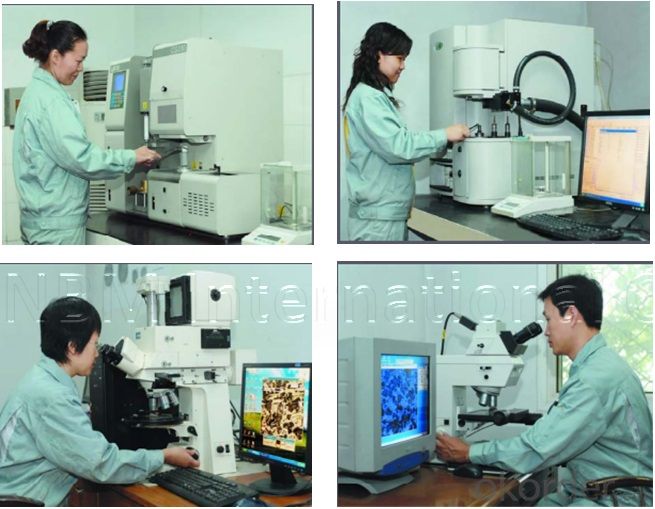
The factories of CNBM invested 2.3 billion RMB for large-scale
CNBM international Corporation has completed equipment and technology upgrade transformation, which was concentrated on three projects, production line of centrifugal casting rolls for hot strip and plate mill, forged roll for cold/hot strip mill, national class technology center and roll material lab. Through upgrade transformation, the following targets have been achideved:
(1)It becomes the world's biggest specialized mill roll maker with the largest production scale, the most complete specifications of products and the most extensive coverage of various rolls used on rolling mill.
(2) The technology of equipments has reached international leading level.
(3) "Mechanization, automation, intellectualization, digitization" of equipments obviously improve the quality control ability.
(4) New types of research instruments improve the R&D capacity of products.
Customers Visit
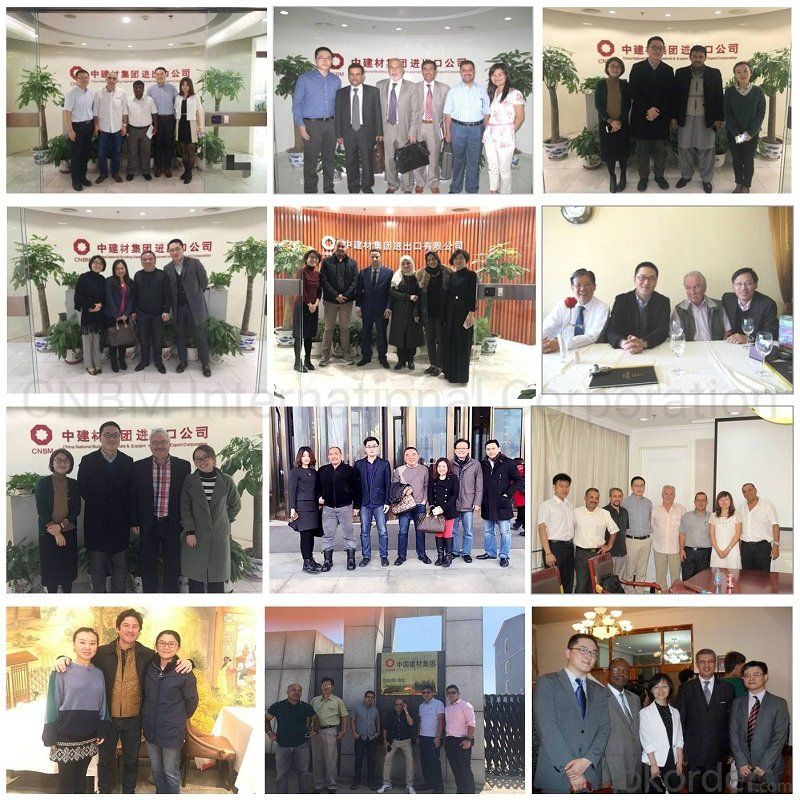
FAQ
Q:Are you a trading company or manufacturer?
A:CNBM is a large-scale central governmental industrial group with its own manufacturing sector, research and development sector, trading sector and logistics sector.
Q:I have some special requirement about specifications.
A:We have a well-rounded product range, which endows us with the capability of applying many special specifications. Please feel free to contact us with yours.
Q:Do you accept OEM service?
A:Yes, we do.
Q:What is your delivery time?
A:It depends on the size/complexity of your order and our own production schedule. Usually we provide a faster delivery than the industry's average.
Q:What is the payment term?
A:Our payment terms are negotiable.
Q:Can I have my own logo on the product?
A:Sure, we can apply your own logo on the products according to your requirement.
- Q: What are the considerations for mold design in metal casting machinery?
- There are several crucial factors to consider when designing molds for metal casting machinery. These considerations are essential for producing high-quality castings and maximizing casting process efficiency. Some key considerations for mold design in metal casting machinery are as follows: 1. Part geometry: The shape and complexity of the part being cast are significant factors in mold design. The mold must be designed to accommodate the part's geometry, including features like undercuts, thin sections, and intricate details. Proper gating and runner systems must also be designed to ensure uniform mold filling and prevent casting defects. 2. Material selection: Selecting the appropriate mold material is crucial for withstanding the high temperatures and pressures involved in the casting process. Materials like cast iron, steel, or heat-resistant alloys are typically used for molds, depending on the specific casting process requirements and the material being cast. 3. Cooling system: An efficient cooling system is essential for controlling the solidification process and preventing defects like shrinkage or porosity. Mold design can incorporate channels or water jackets to facilitate the circulation of cooling fluid and ensure uniform cooling of the casting. 4. Venting and gas escape: Proper venting is necessary to allow gases generated during the casting process to escape. Insufficient venting can lead to defects like gas porosity or trapped gases, compromising the casting's structural integrity. 5. Ejection system: The mold design should include an effective ejection system to remove the solidified casting from the mold. Proper ejection mechanisms, such as ejector pins or air ejection, should be designed to prevent any potential damage to the casting or mold. 6. Mold maintenance and durability: Mold design should consider ease of maintenance and the expected lifespan of the mold. Designing features that allow for easy cleaning and repair, as well as considering the expected number of casting cycles the mold can withstand before replacement, is important. 7. Cost and production efficiency: Optimizing the cost-effectiveness and efficiency of mold design is crucial. Factors like mold complexity, number of cavities, and production volume should be taken into account to ensure economically viable and production-demand meeting mold design. In conclusion, careful consideration of part geometry, material selection, cooling systems, venting, ejection systems, mold maintenance, and cost efficiency is necessary for mold design in metal casting machinery. Paying attention to these considerations will result in high-quality castings and improved casting process efficiency.
- Q: What are the different types of production optimization techniques used in metal casting machinery?
- There are several types of production optimization techniques used in metal casting machinery. Some of the commonly employed techniques include process automation, statistical process control, lean manufacturing, Six Sigma, and computer-aided engineering. These techniques aim to enhance productivity, improve quality, reduce waste, minimize defects, and optimize the overall production process in metal casting machinery.
- Q: Can metal casting machinery be used for investment casting of cobalt-based alloys?
- Yes, metal casting machinery can be used for investment casting of cobalt-based alloys.
- Q: How are robots used in metal casting processes in machinery?
- Robots are extensively used in metal casting processes in machinery to enhance productivity, efficiency, and precision. They perform a variety of tasks throughout the casting process, from pouring molten metal into molds to removing finished castings. One of the primary uses of robots in metal casting is for pouring molten metal into molds. This task is highly hazardous for human workers due to the extreme temperatures and the risk of exposure to toxic fumes. By using robots, the risk of accidents and injuries is significantly reduced. Moreover, robots can ensure consistent and precise pouring, resulting in high-quality castings. Robots are also employed for mold handling and manipulation. They can lift and position molds with ease, reducing the physical strain on workers and increasing overall productivity. Additionally, robots can be programmed to remove excess material or debris from the castings, ensuring a clean and finished product. Furthermore, robots are utilized for quality control in metal casting processes. They can inspect the castings using advanced imaging systems, detecting defects or imperfections that would be difficult to identify with the naked eye. This allows for immediate corrective actions, minimizing waste and improving the overall quality of the castings. In addition to their physical capabilities, robots are equipped with sensors and software that enable them to collect and analyze data during the casting process. This data can be used for process optimization, identifying areas for improvement and ensuring consistent and efficient operations. Overall, the integration of robots in metal casting processes in machinery brings numerous advantages. They enhance worker safety, increase productivity, improve casting quality, and allow for process optimization. As technology continues to advance, robots will play an increasingly vital role in the metal casting industry, revolutionizing the way castings are produced.
- Q: What are the common defects that can occur in castings produced by metal casting machinery?
- Metal casting machinery can produce castings with various defects that can impact their quality and integrity, potentially leading to failures or performance issues. Some of the most common defects include: 1. Porosity: Small voids or bubbles trapped within the metal weaken the casting and increase its susceptibility to cracking or corrosion. 2. Shrinkage: During solidification, the casting volume decreases, resulting in voids or cavities that reduce its mechanical strength. 3. Inclusions: Trapped foreign materials like sand, slag, or oxides weaken the casting and create stress concentration points, leading to premature failure. 4. Misruns: Incomplete castings occur when the molten metal fails to fill the mold cavity entirely due to low pouring temperature, inadequate gating system design, or insufficient pouring time. 5. Cold shuts: Improper fusion of separate streams of molten metal during solidification creates visible lines or seams, weakening the casting and making it prone to cracking. 6. Hot tears: High levels of residual stress cause internal cracking during cooling, commonly due to inadequate feeding or improper gating system design. 7. Surface defects: Poor mold quality, improper casting techniques, or inadequate cleaning processes can result in surface defects like roughness, sand burn-in, or flash, affecting both appearance and functionality. To minimize these defects, metal casting machinery operators should focus on proper gating and risering design, appropriate pouring temperature, and suitable cooling and solidification processes. Regular inspection and quality control measures must also be implemented early on in the casting production process to identify and address any defects.
- Q: What are the common surface treatment options available for metal castings?
- There are several common surface treatment options available for metal castings, each serving different purposes and providing various benefits. 1. Sandblasting: Sandblasting is a surface treatment method that involves propelling particles of sand at high speeds to roughen the surface of the metal casting. This process helps to remove any imperfections or contaminants on the surface, improving the adhesion of subsequent coatings or paints. 2. Powder coating: Powder coating is a popular surface treatment option that involves applying a dry powder to the metal casting and then curing it with heat. The powder adheres to the surface electrostatically and creates a durable and attractive finish. Powder coating provides excellent resistance to corrosion, chemicals, and UV rays, making it a preferred choice for many applications. 3. Galvanizing: Galvanizing is a surface treatment method that involves the application of a layer of zinc onto the metal casting. This process helps to protect the metal from corrosion, as the zinc acts as a sacrificial coating, preventing the underlying metal from coming into contact with moisture and other corrosive substances. 4. Anodizing: Anodizing is a surface treatment process commonly used for aluminum castings. It involves creating an oxide layer on the surface of the metal through an electrochemical process. Anodizing enhances the corrosion resistance of the metal, improves its appearance, and can also provide a base for subsequent coloring or sealing. 5. Plating: Plating is a surface treatment option that involves the application of a thin layer of metal, such as chrome, nickel, or gold, onto the surface of the casting. Plating enhances the appearance of the metal, provides corrosion resistance, and can also improve the conductivity or hardness of the casting. 6. Painting: Painting is a widely used surface treatment option for metal castings. It involves applying a layer of paint to the surface to provide both aesthetic appeal and protection against corrosion. Painting can be done using various techniques, including spray painting, electrostatic painting, or dip coating, depending on the desired finish and requirements. These are just a few of the common surface treatment options available for metal castings. The choice of treatment depends on factors such as the desired appearance, functionality, durability, and environmental conditions the casting will be exposed to. It is important to carefully consider these factors and consult with professionals to determine the most suitable treatment for specific applications.
- Q: How is the solidification of the metal controlled in metal casting machinery?
- The solidification of the metal in metal casting machinery is controlled through various factors and techniques to ensure the desired outcome of the casting process. One of the primary factors that influence solidification is the cooling rate. The cooling rate can be controlled by adjusting the temperature of the mold or by using cooling mediums such as water or air. Controlling the cooling rate is crucial as it affects the formation of the metal's crystal structure and ultimately determines the mechanical properties of the final casting. Another important factor is the design and construction of the mold. The shape and size of the mold can influence the solidification process. For instance, the use of risers or chill plates can help control the solidification by providing additional heat transfer or promoting directional solidification. Furthermore, the addition of alloying elements can also affect solidification. Some alloying elements can alter the solidification temperature range or modify the microstructure of the metal, leading to improved properties or specific characteristics required for the casting. In addition to these factors, metal casting machinery often employs techniques like feeding systems and gating systems to control solidification. Feeding systems such as the use of risers or feeders help compensate for shrinkage during solidification, ensuring a sound and defect-free casting. Gating systems, on the other hand, control the flow of molten metal into the mold and can be designed to promote uniform cooling and solidification. Moreover, advanced technologies like computer simulations and modeling are often used to optimize the solidification process. These tools allow engineers to predict and analyze the solidification behavior and make necessary adjustments to achieve the desired casting quality. In conclusion, the solidification of metal in metal casting machinery is controlled through a combination of factors such as cooling rate, mold design, alloying elements, feeding systems, gating systems, and advanced technologies. By carefully manipulating these variables, manufacturers can ensure the production of high-quality castings with the desired properties.
- Q: What types of materials can be used with metal casting machinery?
- Metal casting machinery can be used with a wide variety of materials. The most common material used in metal casting is metal itself, such as iron, steel, aluminum, and brass. These metals are melted at high temperatures and poured into molds to create various shapes and products. In addition to metals, metal casting machinery can also be used with other materials like ceramics and plaster. Ceramic molds are often used for casting intricate and detailed shapes, while plaster molds are commonly used for small-scale or hobbyist projects. Furthermore, some advanced metal casting machinery can also work with synthetic materials like resins and polymers. These materials are melted or injected into molds to create plastic or composite products. They offer versatility in terms of shape, color, and texture, making them popular in the manufacturing industry. Overall, metal casting machinery can accommodate a wide range of materials, from metals to ceramics, plaster, and even synthetic materials. The choice of material depends on the specific requirements of the desired product, such as its strength, durability, and aesthetic properties.
- Q: How does metal casting machinery handle the finishing operations of castings?
- Metal casting machinery handles the finishing operations of castings through various processes such as grinding, sanding, polishing, and deburring. These machines are equipped with specialized tools and attachments that remove any excess material, smooth out rough surfaces, and enhance the overall appearance of the castings. The machinery ensures precise and consistent finishing, improving the quality and functionality of the castings before they are ready for use.
- Q: What is the role of heat treatment equipment in metal casting machinery?
- Heat treatment equipment plays a crucial role in metal casting machinery as it is responsible for enhancing the properties and characteristics of metal components. Metal casting involves the pouring of molten metal into molds to create desired shapes and structures. However, the resulting castings are often not in their final form and require further processing to ensure the desired mechanical properties, such as strength, hardness, and durability. Heat treatment equipment in metal casting machinery is used to subject the castings to controlled heating and cooling processes. These processes, such as annealing, normalizing, quenching, and tempering, alter the microstructure of the metal, thereby influencing its mechanical and physical properties. One of the primary purposes of heat treatment in metal casting machinery is to relieve internal stresses that may have been induced during the casting process. These stresses can lead to distortion or even failure of the casting if not properly addressed. Heat treatment helps to remove these stresses, ensuring the castings maintain their shape and structural integrity. Additionally, heat treatment equipment is used to refine the grain structure of the metal. By controlled heating and cooling, the size and distribution of the grains within the metal can be manipulated. This refinement improves the strength, toughness, and overall mechanical properties of the castings, making them more suitable for their intended applications. Furthermore, heat treatment can be used to alter the hardness of the metal. Through processes like quenching and tempering, the metal can be hardened or softened to meet specific requirements. For example, hardened castings are often used in applications that require resistance to wear and abrasion, while softer castings may be more suitable for applications that require better machinability. In summary, heat treatment equipment in metal casting machinery plays a critical role in optimizing the properties of castings. It helps to relieve internal stresses, refine the grain structure, and adjust the hardness of the metal, ultimately ensuring that the castings meet the desired specifications and performance requirements.
Send your message to us
Mill Rolls High Speed Steel Roller With Good Quality
- Loading Port:
- Tianjin
- Payment Terms:
- TT OR LC
- Min Order Qty:
- 2 m.t.
- Supply Capability:
- 41000 m.t./month
OKorder Service Pledge
OKorder Financial Service
Similar products
Hot products
Hot Searches
Related keywords
